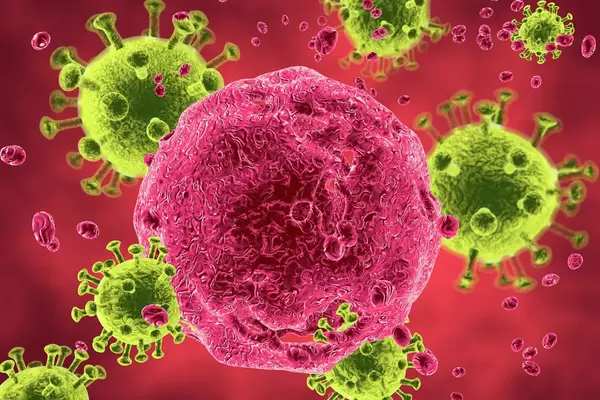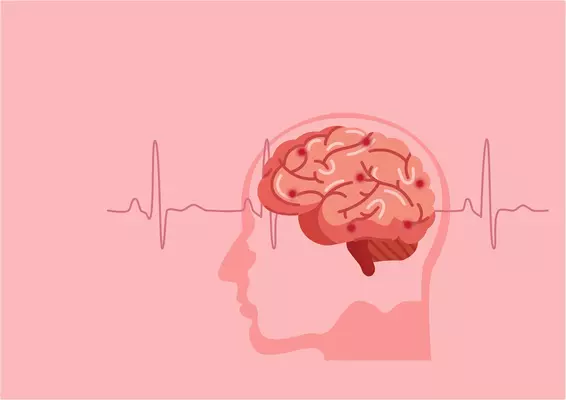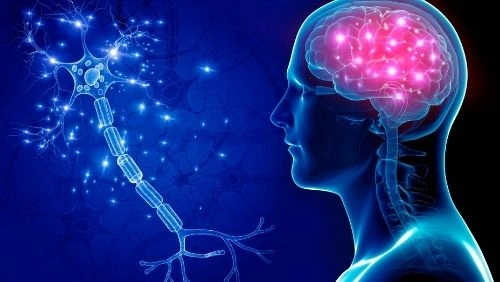Genetic hiv

If you tested your DNA with a personal genomics service like 23andMe, AncestryDNA, FamilyTreeDNA, MyHeritage or another testing company, you can learn more about your risk factors for hundreds of diseases. By clicking the button above ⬆️, you can upload your raw DNA data file and receive a personalized 250-page health report with research links that is the most comprehensive.
HIV, a virus that causes immunodeficiency in humans, belongs to the Lentivirus genus in the Retroviridae family's Orthoretrovirinae subfamily [1]. HIV is classified into two types, HIV-1 and HIV-2, based on genetic traits and variations in viral antigens. The Lentivirus genus also includes non-human primate immunodeficiency viruses, such as simian immunodeficiency virus (SIV).
Tat, Rev, Nef, Vif, Vpr, and Vpu (or Vpx for HIV-2) are genes that regulate proteins responsible for controlling HIV's capacity to infect cells, replicate, and induce illness.
Variations in genes that impact susceptibility to HIV infection:
HIV-1 entry into cells is facilitated by CCR5, a primary coreceptor. Variations in the coding gene and promoter of CCR5 can alter receptor expression on the cell surface, impacting the progression of infection. CCR5, also known as CD195, is a β-chemokine receptor located on chromosome 3, p branch at position 21. The gene has multiple allelic variations, including the delta32 mutation (rs333), which results in a non-functional receptor due to a 32 bp deletion. HIV-1 requires binding to both CCR5 and CXCR4 receptors on CD4 lymphocytes via the viral gp120 glycoprotein to enter cells. However, the delta32 mutation prevents HIV-1 from entering T cells, rendering individuals homozygous for the mutation (delta32-delta32) resistant to HIV-1 infection. CCR5-delta32 is present in 5-14% of European populations, but is rare in Asian and African populations.
CD192, also known as CCR2, is a chemokine receptor that is produced by the CCR2 gene. This gene encodes two isoforms of the monocyte chemoattractant-1 CCL2 receptor, which is responsible for monocyte chemotaxis. CD192 plays a crucial role in the migration of monocytes during inflammatory diseases like rheumatoid arthritis and is also responsible for the inflammatory response to tumors. Additionally, the receptors produced by this gene facilitate agonist-dependent calcium mobilization and inhibit adenylate cyclase.
The CX3CR1 gene produces a protein with the same name, also referred to as a fractalkine receptor or G-protein receptor 13 (GPR13). This protein binds to the CX3CL1 chemokine, which includes fractalkine and neurotactin, and affects the adhesion and migration of leukocytes. Additionally, CX3CR1 acts as a co-receptor for HIV-1 and facilitates the virus's entry into cells. Alterations to this gene may increase susceptibility to HIV-1 infection and accelerate the progression to AIDS.
The HLA-C gene has a 5' region called Rs9264942, located 35kb from the start of transcription. This region has different genetic variants (T/T, C/T, and C/C). Among European citizens, approximately 10% have the C/C variant, which is linked to a significant decrease in HIV viral load compared to T/T homozygotes. HLA-C antigens are crucial in controlling HIV infection by serving as ligands for KIR on NK cells and presenting antigens to cytotoxic T lymphocytes. The level of NK lymphocyte activation is influenced by HLA-C expression.
HLA-B*57 is a type of B17 antigen that is commonly used in the care of HIV-positive patients. Its designation is particularly important in determining the likelihood of an abacavir hypersensitivity reaction. Prior to the routine use of HLA-B*5701 testing in HIV patients, around 8% of those taking abacavir experienced hypersensitivity reactions, which could potentially lead to life-threatening anaphylactic reactions upon re-administration of the drug. However, the identification of HLA-B*57 has helped to significantly reduce this risk, with a positive prediction value of 61.2%, a negative prediction value of 95.5%, a sensitivity of 44%, and a specificity of 96%.
Follow the link of the selected polymorphism to read a brief description of how the selected polymorphism affects HIV and see a list of existing studies.
SNP polymorphisms related to the topic HIV:
| rs1799864 | There is a 58% greater risk of developing AIDS in the first 4 years after a positive HIV test. |
| rs2572886 | There is a 1.4-fold increased risk of HIV infection. |
| rs8321 | The HLA-C single nucleotide polymorphism is associated with increased viral load in HIV-1-infected individuals. |
| rs2395029 | The HCP5 single nucleotide polymorphism is associated with slow progression of AIDS in women infected with HIV-1. |
| rs2234358 | The CXCR6 gene as a novel chemokine receptor involved in long-term prevention of AIDS progression. |
| rs17762192 | The 1q41 locus associated with the rate of HIV-1 disease progression to clinical AIDS. |
| rs9368699 | A single nucleotide polymorphism that favours natural long-term slowing of HIV infection progression. |
| rs10484554 | |
| rs3108919 | |
| rs1020064 | |
| rs1522232 | |
| rs4118325 | |
| rs10800098 | |
| rs1360517 | |
| rs1556032 | |
| rs1015164 | |
| rs11239930 | |
| rs6467710 | |
| rs11884476 | |
| rs7217319 | |
| rs6441975 | |
| rs477687 | |
| rs572880838 | |
| rs6076463 | |
| rs9264942 | |
| rs4418214 | |
| rs3131018 | |
| rs9261174 | |
| rs8069770 | |
| rs12483205 | |
| rs152363 | |
| rs1265112 | |
| rs1127888 | |
| rs667859 | |
| rs2306242 | |
| rs444772 | |
| rs3796375 | |
About The Author
Li DaliLi Dali, a National Foundation for Outstanding Youth Fund recipient, is a researcher at the School of Life Sciences in East China Normal University. He earned his PhD in genetics from Hunan Normal University in 2007 and conducted collaborative research at Texas A&M University during his doctoral studies. Li Dali and his team have optimized and innovated gene editing technology, leading to the establishment of a world-class system for constructing gene editing disease models.


